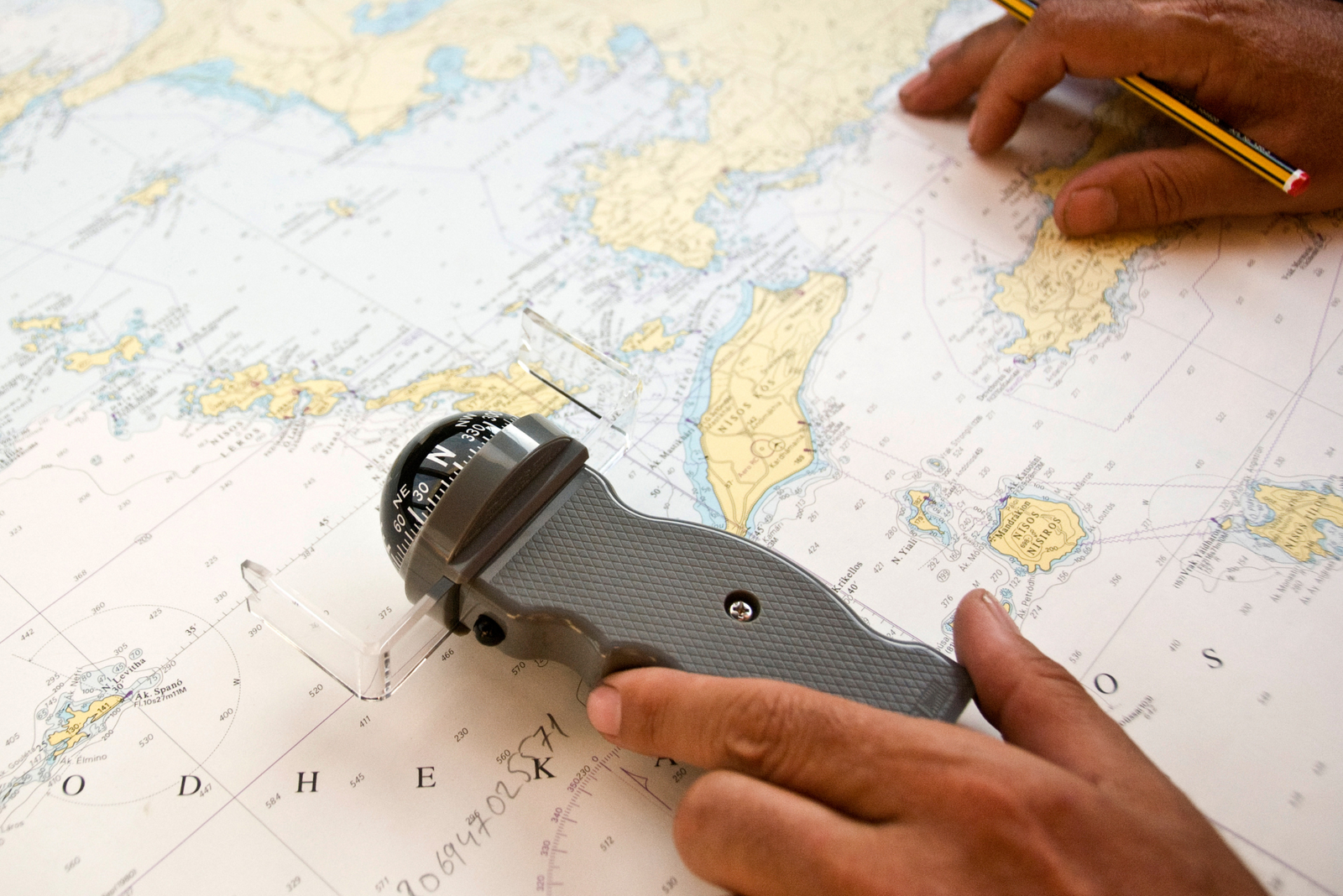Free Shipping on Orders $50+
Free Shipping on Orders $50+

Your Beginner’s Guide to Nautical Chart Symbols
by Bob Figular December 27, 2024
Nautical chart symbols and abbreviations take many different shapes and forms. Still, they all work together to provide mariners with a quick way to determine the physical characteristics of a charted area. They also make it easy to find information on navigation aids.
Interpreting the symbols can be confusing; however, learning them is critical to safe navigation on the water. Don’t be daunted by all the lines, colors, and squiggles. Here, we outline the nautical chart symbols you need to know.

Basic Nautical Chart Symbols
Nautical chart symbols are uniform and standardized but may vary depending on the scale of the chart or the chart series. These chart symbols and abbreviations are shown in “U.S. Chart No. 1”, a document published jointly by the Department of Commerce National Oceanic and Atmospheric Administration and the Department of Defense National Geospatial-Intelligence Agency.
Buoys
The basic symbol for a buoy is a diamond and a small circle, though older charts may show a dot instead of a circle. The symbol denotes the approximate location of the buoy mooring.
The diamond — which may be above, below, or alongside the circle or dot — draws attention to the position of the circle or dot and describes the aid to navigation.
Lighthouses and Fixed Lights
Lighthouses and other fixed lights appear as a black dot with a magenta “flare.” This nautical chart symbol looks similar to a large exclamation mark. Major lights are named and described, while minor lights are only described.
Day Beacons
Day beacons are indicated by small triangles or squares, which may be colored to match the aid. Day beacons, also commonly called “day marks,” are always fixed aids, meaning they’re on a structure secured to the ground or on the shore.
Prominent Landmarks
Prominent landmarks include water towers, smokestacks, and flagpoles. They’re pinpointed by the standard symbol of a dot surrounded by a circle. A notation next to the symbol defines the landmark’s nature. If you see a circle without a dot, the landmark’s location is approximate.
Wrecks, Rocks, and Reefs
Wrecks, rocks, and reefs are also marked with standardized symbols. For example, a nautical chart may show a sunken wreck by a symbol or by an abbreviation alongside a number indicating the wreck’s depth at mean-low or lower-low water heights.

Advanced Nautical Chart Symbols and Abbreviations
Some nautical chart symbols combined with others offer mariners more detailed information. For example, a dotted line around any symbol calls special attention to its hazardous nature.
A system of abbreviations, used alone or in combination, describes the bottom characteristics, which helps mariners select the best holding ground when anchoring.
You may also encounter standardized shorthand representations of low-lying structures such as jetties, docks, drawbridges, and waterfront ramps. These symbols are at scale and viewed from overhead.
Learn More About Nautical Chart Symbols
The “U.S. Chart No. 1” is more than 100 pages long, meaning you have plenty more to learn about nautical chart symbols. Study symbols, abbreviations, and more at your pace by taking a Mariners Learning System captain’s license course.
We offer a variety of resources to help you go beyond memorization and gain a true understanding of the knowledge and skills — chart reading included — that you need to become a great captain. Explore our courses today.
Leave a Comment
Comments will be approved before showing up.
